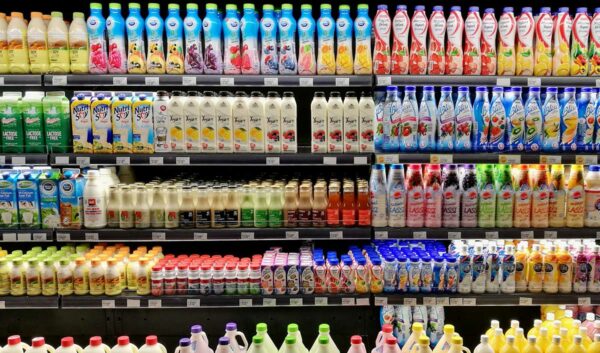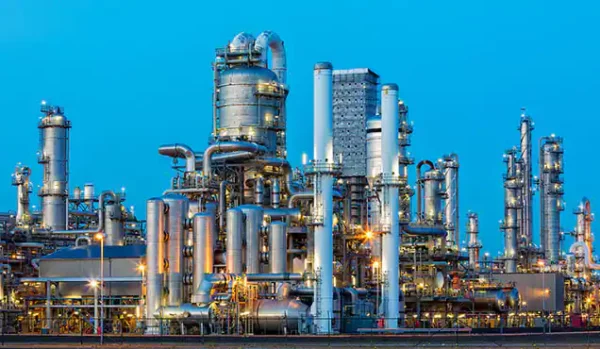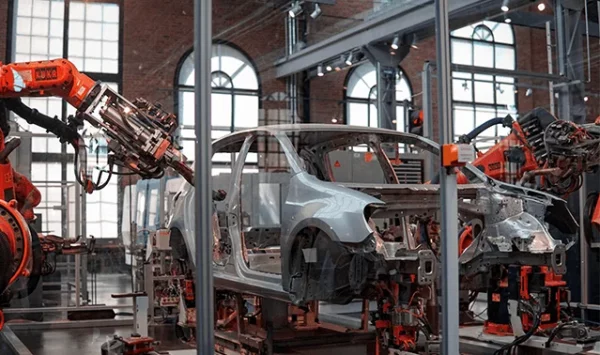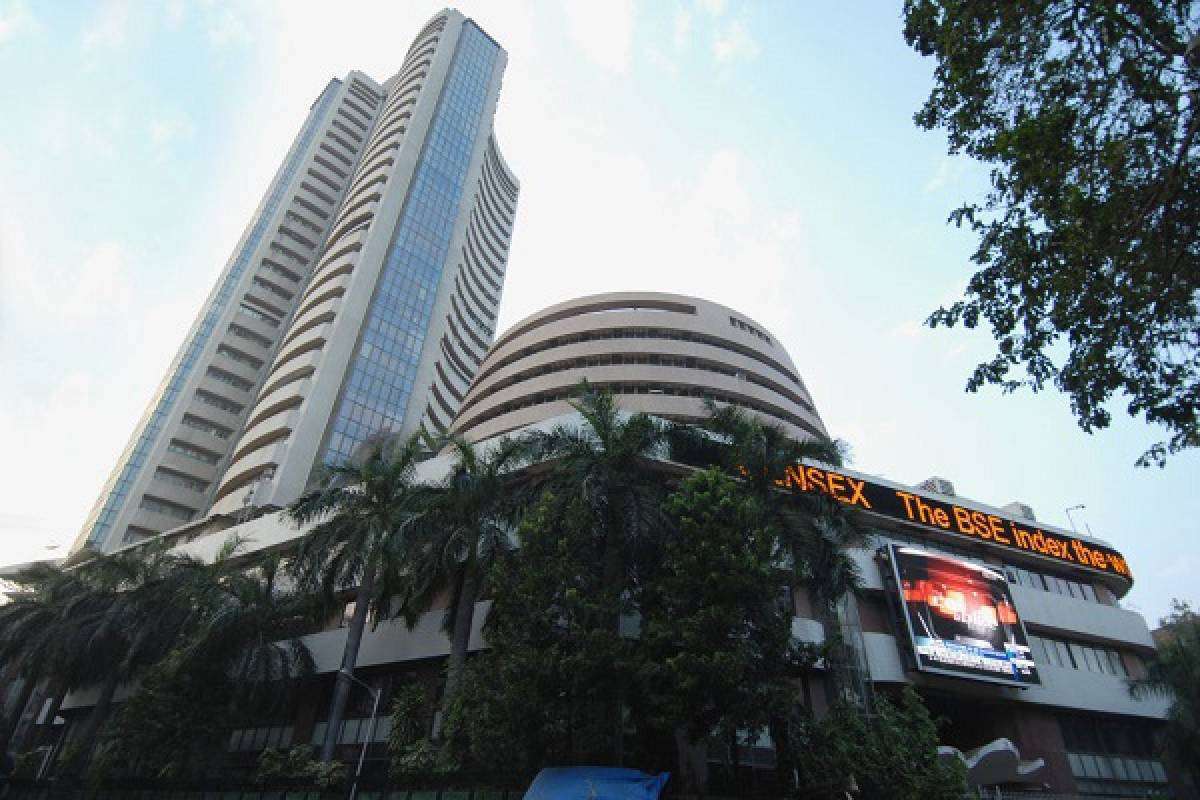
Top 10 industries in India with the most billionaires
In India, a number of major industry groups are performing exceptionally well, producing billionaires. Several industry sectors are outperforming the others and favourably impacting the Indian economy by catering to the needs of both the home market and exports. According to the Hurun Report, the top 10 industry sectors in the country that have created the most millionaires are listed below.

1. Pharmaceuticals
The pharmaceutical industry in India has generated the most billionaires, with 137. Poonawalla is the richest person in this industry, with a net worth of INR 88,800 crores. India supplies more than half of the world’s vaccination needs, 40 per cent of generic drug demand in the United States, and 25% of the UK’s total medicine requirements.
India is the world’s third-largest volume producer and fourteenth-largest value manufacturer of pharmaceuticals. The domestic pharmaceutical sector is made up of 3,000 medicinal companies and 10,500 production units.
In the global medicines industry, India holds an important place. In addition, the country boasts a pool of scientists and engineers who can propel the sector forward to new heights. Indian pharmaceutical companies supply over 80% of the antiretroviral medications needed to combat AIDS (Acquired Immune Deficiency Syndrome) around the world.
The home market is predicted to rise thrice in the next decade, according to the Indian Economic Survey 2021. India’s domestic pharmaceutical business is estimated to be worth US$ 42 billion in 2021, rising to US$ 65 billion by 2024 and US$ 120-130 billion by 2030.
Biopharmaceuticals, bio services, bio-agriculture, bioindustry, and bioinformatics are all part of India’s biotechnology industry. In 2020, the Indian biotechnology business was worth $70.2 billion; by 2025, it is predicted to be worth $150 billion.
From 2020 to 2025, the pharmaceutical market is estimated to grow at a 37 per cent CAGR to reach US$ 50 billion.

2. Services & Software
According to the Hurun Report, the software and services sector has generated 73 billionaires, the second-highest number in India. Azim Premji is the richest person in this industry sector, with a net worth of INR 1,17,100 crores. Infosys, Wipro, TCS, and Tech Mahindra are some of the market leaders in this sector, which provides a diverse range of goods across many industries.
The Indian Information Technology/ Information Technology Enabled Services (IT/ITeS) industry has made a massive contribution to positioning India as the desired investment destination for global investors and creating major job opportunities in India, the United States, Europe, and other parts of the world. In terms of revenue, the industry has expanded tenfold in the last decade, with a relative contribution to India’s GDP of roughly 8% in FY2020-21.
India is the world’s most popular offshoring destination for IT companies. After demonstrating its ability to deliver both on-shore and offshore services to global customers, evolving technologies now open up a whole new world of possibilities for India’s top IT enterprises. In the global sourcing market, the country’s cost competitiveness in delivering IT services, which is roughly 3-4 times lower than the US, remains its USP. The Indian IT-ITeS industry provides cost-effectiveness, high reliability, quick deliveries, and, most importantly, global application of cutting-edge technologies.
The Services & Software industry is a global leader and has been steadily contributing to increased exports and job creation. In FY2020-21, India’s IT-BPM industry is predicted to grow by 2.3 per cent to USD 194 billion, with exports of $150 billion (E). This industry has created a great number of job possibilities, with 4.47 million professionals anticipated to be employed in FY 2019-2020, an increase of 1,38,000 persons.

3. FMCG
The FMCG industry sector in India has created 59 billionaires, putting it in third place for the number of billionaires produced. Nusli Wadia & Family are the richest people in this industry, with a net worth of INR 42,200 crores. Household and personal care products alone account for 50% of sales in the fast-moving consumer goods market.
From US$ 110 billion in 2020 to US$ 220 billion in 2025, the FMCG market is predicted to grow at a CAGR of 14.9 per cent. Despite statewide lockdowns, the FMCG business increased by 16 per cent in CY21, a 9-year high, driven by consumption-led growth and value expansion from higher product prices, notably for basics. In the same quarter, the rural market grew by 14.6 per cent, while metro markets grew for the first time in two quarters.
During the period 2015-20, final consumer expenditure climbed at a CAGR of 5.2 per cent. According to CRISIL Ratings, revenue growth in the FMCG sector will double from 5-6 per cent in FY21 to 10-12 per cent in FY22. Price rises across product categories, volume growth and a comeback in demand for discretionary items are driving growth. Despite lockdowns in many sections of the country, the FMCG industry rose by 36.9 per cent in the April-June quarter of 2021.
In the September quarter, the number of households buying on the modern-trade channel increased by 29.15 per cent year over year, while shopping volume increased by 19.2 per cent.

4. Chemicals and Petrochemicals
India’s chemicals and petrochemicals sector ranks fourth in producing billionaires, with 57 billionaires. The richest person in this sector is Sri Prakash Lohia, whose net worth is INR 40,500 crores. Reliance Industries Ltd., Indian Petrochemicals Corporation Ltd., Gas Authority of India Ltd., and Haldia Petrochemicals Ltd. are the market leaders in this sector.
Except for a few hazardous substances, India’s chemical sector has been de-licensed. Alkali chemicals hold 71.9 per cent of overall output in the Indian chemical industry from April to July 2021 (FY22); polymer manufacture holds 59 per cent of the total production of basic essential petrochemicals in 2019. By 2025, the chemical sector is estimated to contribute $300 billion to the country’s GDP.
On a global scale, India has a major position in chemical exports and imports. In 2018-19, the chemicals sector covered approximately 80,000 commercial items, with a total market size of US$ 178 billion. On the back of increased demand in the end-user sector for speciality chemicals and petrochemicals, the industry is predicted to develop at a 9.3 per cent annual rate to reach US$ 304 billion by 2025. Production quantities of essential chemicals were 935,513 MT, and petrochemicals were 1,716,781 MT in August 2021. By 2025, the specialised chemicals industry will be worth $40 billion.
According to the Crisil research, Indian manufacturers’ revenue grew at a CAGR of 11% between FY15 and FY21, bringing India’s share of the global speciality chemicals industry to 4% from 3%. Speciality chemicals producers’ Capex would rise 50% YoY to Rs. 6,000-6,200 crore (US$ 815-842 million) in FY22, thanks to a rebound in domestic demand and strong exports. Domestic demand recovery and higher realisations owing to rising oil prices and stronger exports are expected to drive revenue growth to 19-20% YoY in FY22, up from 9-10% in FY21.

5. Automobiles & Auto Components
The autos and auto components business in India, which produces 45 billionaires, is ranked fifth on the list of industries that produce the most billionaires. Rahul Bajaj & Family are the wealthiest people in this industry, with a net worth of INR 60,700 crores. India is one of the world’s major markets and a commercial vehicle production industry leader.
From FY16 to FY20, the auto-components sector grew at a CAGR of 3.28 per cent, reaching US$ 45.90 billion in FY21. By FY26, the industry is estimated to be worth $200 billion.
This sector is predicted to grow by double digits in FY22, thanks to strong growth prospects in all vehicle industry segments.
The auto-components sector employs as many as 5 million people, directly and indirectly, accounting for 7.1 per cent of India’s GDP. A stable government framework, greater purchasing power, a big domestic market, and ongoing infrastructural development have made India a perfect investment location.
The industry can be divided into two categories: organised and unorganised. The organised sector caters to original equipment manufacturers (OEMs) and consists of high-value precision instruments, whereas the unorganised sector consists of low-value items and mostly serves the aftermarket.
Between April and September 2021, the vehicle component industry’s turnover was Rs. 1.96 lakh crore (US$ 26.6 billion), with a revenue increase of 15-17 per cent predicted for the fiscal year. Exports of auto components increased by 76 per cent to Rs. 68,746 crore (US$ 9.3 billion) in the first half of FY22. Automobile component exports from India are estimated to reach US$ 80 billion by 2026, according to the
This sector is expected to rise by 20-23 per cent in FY22, thanks to strong overseas demand and a rebound in the local original equipment and aftermarket markets.

6. Construction & Engineering
The construction engineering sector in India has generated 45 billionaires, placing it sixth among the top ten industries that have produced the most billionaires. P Pitchai Reddy is the richest person in this industry, with a net worth of INR 13,400 crores. This industry is one of India’s top employers and contributes to the country’s economy.
The construction sector is divided into two categories: real estate and urban development. Residential, office, retail, hotels, and leisure parks are all included in the Real Estate section. Water supply, schools, and healthcare are all sub-segments of the urban development segment. Between April 2000 and September 2021, FDI in the construction development sector (townships, housing, built-up infrastructure, and construction development projects) and construction activities totalled $26.16 billion and $25.95 billion, respectively.

7. Financial Services
India’s financial services sector has created 43 billionaires, with Uday Kotak being the highest, with a net worth of INR 94,100 crores. Commercial banks, co-operatives, non-banking financial companies, insurance companies, mutual funds, pension funds, and other smaller financial entities are all included in this sector.
India’s diverse financial sector is expanding, both in terms of established financial services firms’ robust growth and new entrants into the market. Commercial banks, insurance firms, non-banking financial companies, co-operatives, pension funds, mutual funds, and other smaller financial institutions make up the sector. New businesses, like payment banks, have lately been allowed to be established by the banking regulator, expanding the types of entities that operate in the industry. However, the financial sector is primarily a banking sector, with commercial banks accounting for more than 64% of the financial system’s total assets.
The Indian government has implemented a number of reforms to liberalise, regulate, and improve this business. The government and the Reserve Bank of India (RBI) have made a number of steps to make it easier for Micro, Small, and Medium Enterprises (MSMEs) to obtain funds. These initiatives include establishing a Micro Units Development and Refinance Agency, establishing a Credit Guarantee Fund Scheme for MSMEs, releasing guidelines to banks about collateral requirements, and establishing a Credit Guarantee Fund Scheme for MSMEs (MUDRA). India is unquestionably one of the world’s most lively capital markets, thanks to a concerted effort from the government and the business sector.
The mutual fund sector managed Rs. 38.89 trillion (US$ 518.15 billion) in AUM as of January 2022, with a total number of accounts of 123.1 million.
In November 2021, compared to November 2020, inflows into India’s mutual fund schemes via systematic investment plans (SIP) grew by 17% to Rs. 1.05 lakh crore (US$ 13.98 billion). By the end of December 2021, equity mutual funds had received a net inflow of Rs. 22.16 trillion (US$ 294.15 billion).
The insurance industry is another important part of India’s financial sector. The insurance sector has been growing rapidly. In FY21, life insurance companies’ total first-year premiums totalled $37.1 billion. Premiums from new life insurance enterprises in India totalled US$ 17.6 billion in FY22*. Non-life insurance premiums reached Rs. 1.82 lakh crore (US$ 24.18 billion) in the first ten months of FY22.

8. Food & Beverages
There are 39 billionaires in India who have made their fortune in the food and beverage industry. This places this industrial area at number eight on the top ten sectors producing the most billionaires. Ravi Jaipuria & Family are the wealthiest people in this business, with a net worth of INR 11,500 crores. India’s consumer packaged goods (CPG) sector is dominated by the food and beverage industries.
The Indian food and beverage sector is primed for massive expansion, with its contribution to global food commerce increasing year after year. The food sector in India has emerged as a high-growth and high-profit sector, notably in the food processing business, due to its potential for value addition.
The Indian government, which controls roughly 32% of the country’s overall food market, has been instrumental in the establishment and growth of the food processing business. The government, through the Ministry of Food Processing Industries, is actively encouraging investment in the industry. It has authorised proposals for joint ventures, overseas collaborations, industrial licences, and units that are mainly focused on exports.
The Indian food and grocery market is the sixth-largest in the world, with retail accounting for 70% of total sales. The Indian food processing sector, which holds 32 per cent of the country’s overall food market and is rated fifth in terms of production, consumption, export, and predicted growth, is one of the country’s largest industries. It holds for 8.80 and 8.39 per cent of GVA in manufacturing and agriculture, respectively, and 13 per cent of India’s exports and 6% of overall industrial investment. The Indian gourmet food business is worth US$ 1.3 billion and is expected to develop at a 20 per cent compound annual growth rate. By 2020, India’s organic food market is predicted to have tripled.
In India, the online meal ordering industry is still in its infancy, but it is growing. With online meal delivery companies like FoodPanda, Zomato, TinyOwl, and Swiggy gaining traction through partnerships, the organised food industry has a bright future. In 2016, the internet meal delivery market rose by 150 per cent year over year, with a Gross Merchandise Value (GMV) of US$ 300 million.

9. Textiles, Apparels & Accessories
India’s textiles, apparel, and accessories industrial area has generated 36 billionaires, placing it ninth among the top ten industries that have produced the most billionaires. Harish Ahuja is the richest person in this industry, with a net worth of INR 5,900 crores. The Indian textile industry is one of the oldest in the world, with a wide range of products.
The textile and clothing industry in India is strong across the entire chain, from fibre to yarn to fabric to clothing. Traditional handloom, handicrafts, wool, silk items, and India’s organised textile industry are all part of the Indian textile and garment sector. Spinning, weaving, processing, and apparel production are all part of India’s organised textile industry, which is defined by the mass production of textile items using capital-intensive machinery.
The domestic textiles and garment industry generated $108.5 billion in 2019-20, with $75 billion being consumed domestically and $28.4 billion being exported to the global market.
From April 2016 to March 2021, Japan, Mauritius, Italy, and Belgium were the top donors of FDI in India’s textile sector. In FY 2021-22, India achieved its highest-ever export total of US$ 44.4 billion in Textiles and Apparel (T&A), including Handicrafts, an increase of 41% and 26% over the corresponding values in FY 2020-21 and FY 2019-20, respectively.

10. Real Estate
In India, the real estate sector has generated 33 billionaires, ranking it tenth among the industry sector that has produced the most billionaires. Jitendra Virwani is the richest person in this sector, with a net worth of INR 29,900 crores. The country’s real estate business is one of the most well-known around the world. Housing, retail, hotel, and business are the four subsectors of this category.
By 2030, India’s real estate sector is expected to have grown to US$ 1 trillion, up from US$ 200 billion in 2021, and will hold 13% of the country’s GDP. Retail, hospitality, and commercial real estate are all seeing expansion, providing much-needed infrastructure to India.
India’s real estate market sold over 1,700 acres of land in the top seven cities in only one year. From 2017 to 21, foreign investments in commercial real estate totalled US$ 10.3 billion. After the existing SEZ legislation is updated in February 2022, developers expect an increased demand for office space in SEZs.
Indian corporations are expected to fund more than Rs. 3.5 trillion (US$ 48 billion) through infrastructure and real estate investment trusts in 2022, according to ICRA, compared to US$ 29 billion raised so far.
The office market in the top eight cities saw 22.2 million square feet of transactions from July to December 2020, with 17.2 million square feet of new completions. In the second half of 2020, the Information Technology (IT/ITeS) sector dominated with a 41 per cent share, followed by the BSFI and Manufacturing sectors with 16 per cent each, and the Other Services and Co-working sectors with 17 per cent and 10%, respectively.
In India, over 40 million square feet were delivered in 2021. In the next 2-3 years, the country is predicted to have a 40 per cent market share. In 2022, India is estimated to produce 46 million square feet.
According to Savills India, data centre real estate demand is predicted to grow by 15-18 million square feet by 2025.
At 5.7 million square feet, the manufacturing sector will hold 24 per cent of office space leasing in 2020. Between Pune, Chennai, and Delhi NCR, SMEs and electronic component manufacturers rented the most, followed by auto segment leasing in Chennai, Ahmedabad, and Pune. The 3PL, e-commerce, and retail categories, respectively, accounted for 34%, 26%, and 9% of all office space rentals. The office category drew 71 per cent of all PE investments in real estate in Q4 FY21, followed by retail (15 per cent), residential (7 per cent), and warehousing (7 per cent).
In 2021, India’s gross lease volume in the top eight cities was 16.2, up 12.4 per cent from the last quarter. In the fourth quarter of 2021, India’s net absorption of the office market was 11.56 million square feet. This was an 86 per cent increase from the last quarter.
Article proofread & published by Gauri Malhotra.




